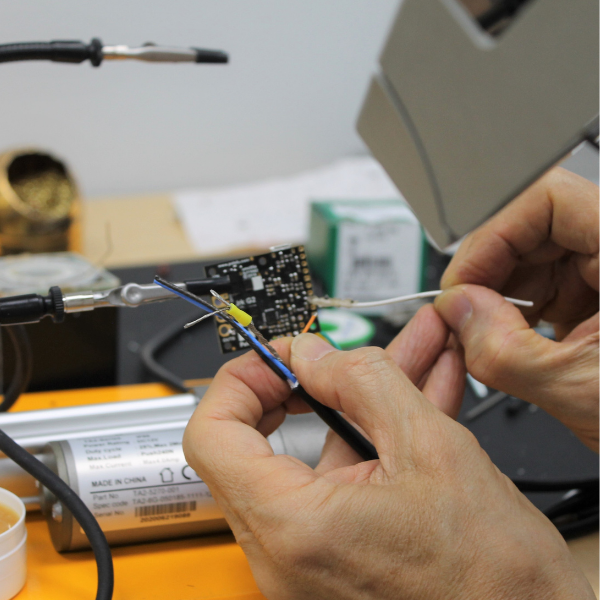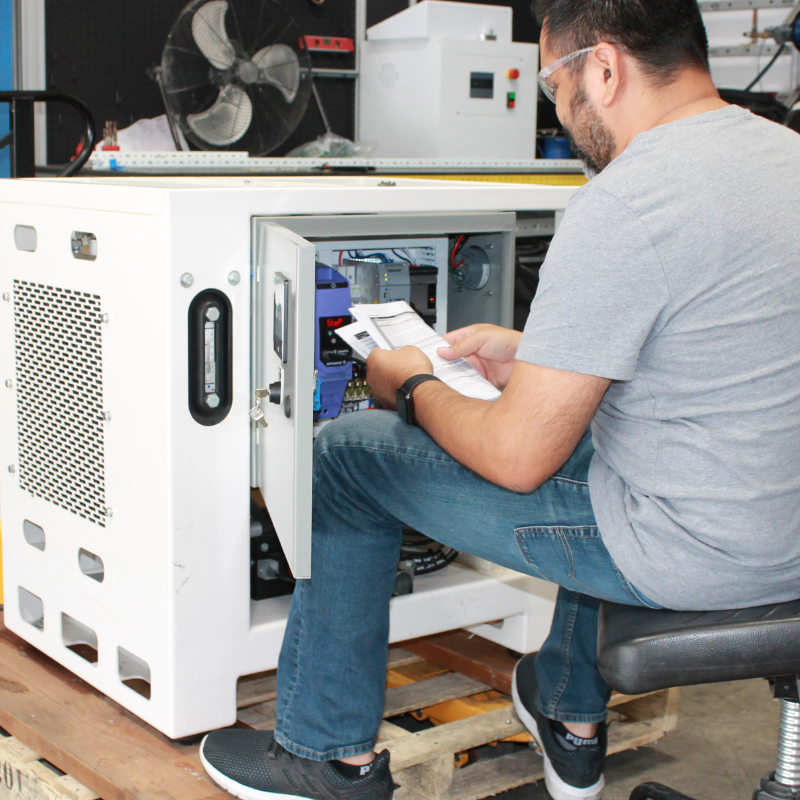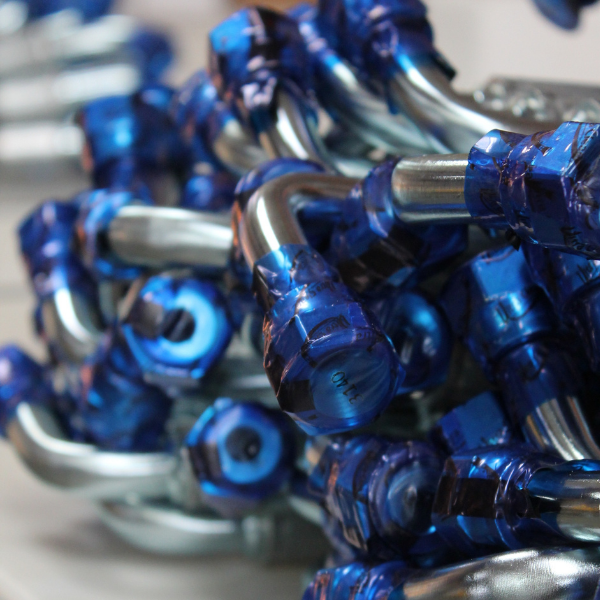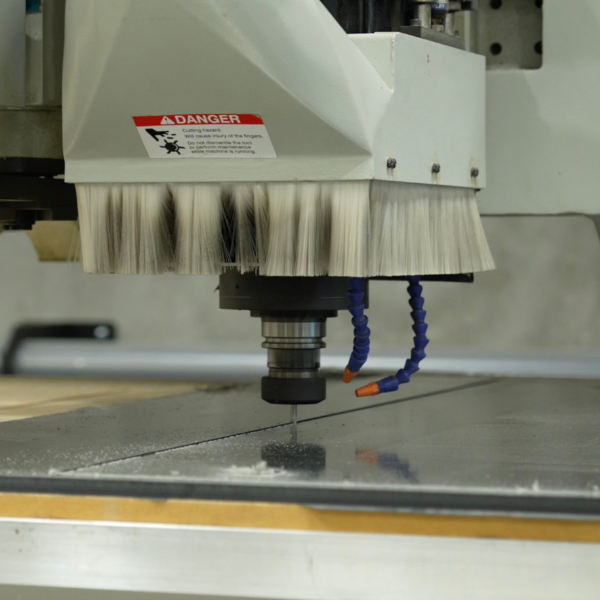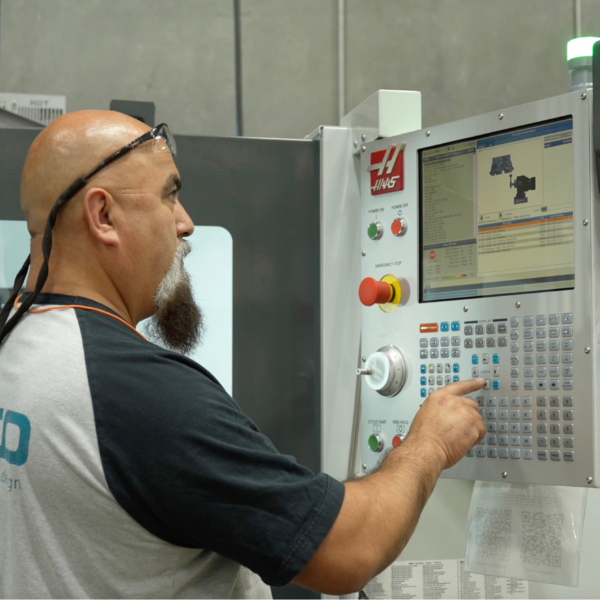ROTARY MOTION FOR AUTOMATION
APRIL 2024
About Us
Since 1967, Rotomation has maintained its service and product reputation in the manufacture of practical, durable, rotary actuators that produce a variety of shaft motions. All units are assembled to order, and about 40% are special designs. Product development and improvement are never-ending and our service includes telephone support, distributor availability, and repair in our own shop to ensure like-new operation.
Our Values
- DEDICATED TO QUALITY: 100% product testing with 0.2% return rate
- INDUSTRY FIT: More shaft motion capabilities than any competitor
- AVAILABLE: Short lead time, expedite available, immediate support
- STABLE: Rotomation employees average 20 years with the company.
- ADAPTABLE: Extreme configurability and easy customization
- RELIABLE: Long life products, on-time delivery
- LONG TERM SERVICE: Zero product obsolescence, spare part and rebuild service available
- AGILE: We can develop specialized products for OEM on short schedule
- EQUIPPED: Most parts machined in-house by CNC, tested on purpose-built equipment
- LOYAL: Distributors and customers have remained with us for more than 40 years.
Summary
With the advancement of technology in industrial automation, multi-position actuators have become an integral part of modern machinery. These devices can hold multiple positions during their operation, unlike the more common two-position actuators. This white paper explores the concept of multi-position actuators, their advantages, working principles, and the various applications where they excel.
Introduction
Multi-position actuators are devices designed to accurately move and control mechanisms through multiple stops, positions, or states predefined by mechanical components. This contrasts with servo- or stepper-based actuators with essentially infinite positioning capability. Their capability to halt and hold at pre-defined positions makes them useful for providing more complex movements in various industrial processes while maintaining the simplicity of on-off control devices. Servo or stepper systems require motion control hardware and software, drivers, and in many cases, feedback devices.
Definition and Working Principle
Multi-position actuators operate using pneumatic or hydraulic power. They convert this energy into mechanical motion, to move machine components to specific locations based on input signals.
What Are Multi-position Actuators and Where Do They Excel?
-
Three-Position Actuators
Fluid power multi-position actuators are based on standard two-position actuators, with the addition of internal stops and/or auxiliary cylinders. The most common configuration is a three-position actuator, which is offered by many actuator manufacturers. For actuators with floating pistons, this can be accomplished by installing stop tubes into two of the cylinders of a dual rack actuator. -
Four and Five-Position Actuators
Actuators with floating pistons can be configured to provide up to five positions. In addition to the stop tubes for three positions, auxiliary cylinders are added in pairs for each additional position. These are single-acting air cylinders with rods projecting through bearings mounted in the actuator end caps. Each pair is made to capture the pistons and racks in a position intermediate between the other positions.Rack and pinion rotary actuators require clearance (lash) between teeth to prevent binding and wear. This produces free play of the shaft, which can be detrimental in some applications. Dual rack actuators have extra stroke added which eliminates lash at stroke ends, but not at intermediate positions in multi-position actuators. Rotomation has developed a layout and precise assembly procedure which reduces lash at intermediate positions to near zero.
Lash In Multi-Position Rotary Actuators
A two-position rotary actuator is usually driven by a four-way directional control valve. For multiple positions, an additional 3-way directional control valve is added for each additional position. An additional flow control valve or pair of valves may be needed for optimum control of the actuator, depending on the inertia and orientation of the load.
Controls for Multi-Position Rotary Actuators
Multi-position rotary actuators are powerful, rugged components that have several advantages when compared with other solutions. Compared to electric servo or stepper-driven actuators, they are less expensive, much simpler to implement, and can operate in harsh or explosive environments. Compared to combinations of multiple two-position actuators, they are much more compact, simple to design, and do not require additional hardware to be designed and added to the assembly.
Advantages
- Positioning: Moving a component to multiple orientations to present different faces of the part to robots, welding or assembly operators, or inspection tools is a perfect application for multi-position actuators.
- Sorting: Three-position actuators are the most chosen for this application where they are directing parts into different channels depending on orientation, defect determination, or type. But there are cases where four or five-position actuators would be called for.
- Valve Actuation: Especially in the process industries, multi-position valves are often used to simplify plumbing and control. Using a multi-position rotary actuator is a simple, compact, and effective solution.
- Multiple Process Transport: A multi-position actuator can simplify the task of moving a part to multiple processing stations. A single engagement/disengagement of the part reduces positioning errors and required components.
Applications Where Multi-Position Actuators Excel
Multi-position fluid power rotary actuators are rugged, precise components that give the machine or tool designer great flexibility to position parts and components into various positions using one component with a single rotary axis. This can greatly simplify the design and build process, reducing cost, space requirements, and parts count. The resulting simplification also reduces setup and maintenance costs.
In addition, these actuators are well suited to operation in harsh or explosive environments where electrical solutions may be difficult or impossible to implement.
Conclusion
Organizations seeking to improve precision, efficiency, and versatility in their operations should consider the integration of multi-position rotary actuators. They offer an off-the-shelf solution to positioning problems that otherwise could require substantial design effort and add to the complexity and cost of automated equipment.


